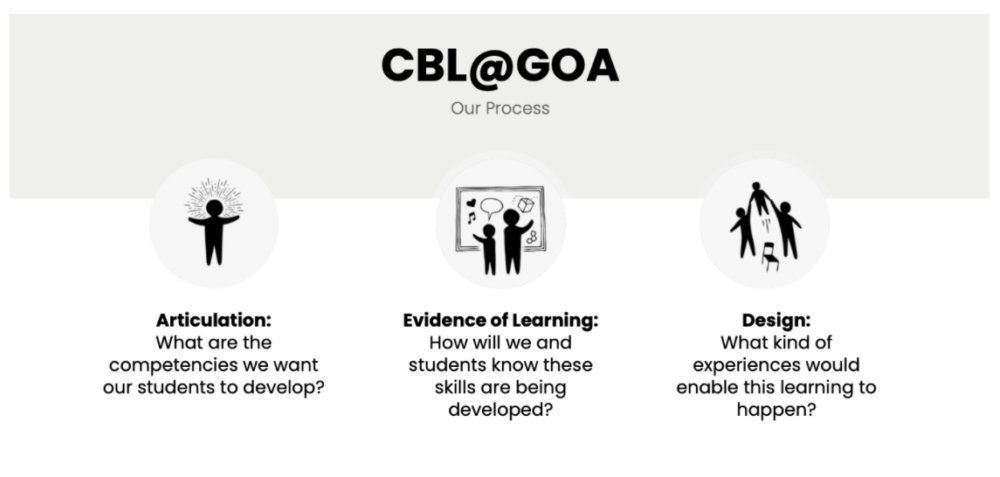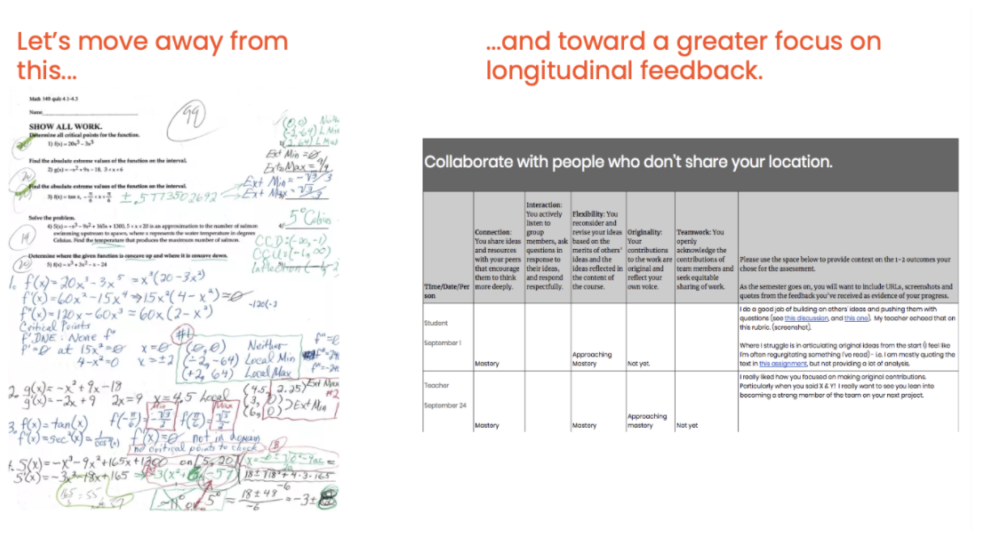Making the Shift from Time to Performance: Three Priorities for Student-Centered Learning
When educators are planning for the year, a unit, or a lesson, time is often the organizing framework. It is often the least flexible restraint and the most arbitrary measure. Yet, despite its generational tenure within our schools, the concept of a school year and the structure of a school day have little to do with learning.
Instead, what we have learned through learning science and likely even from our own experiences is that learning takes place over time; learning is meant to be recursive, to be practiced, to be developed. Learning is not a linear process.
Competency-based learning (CBL) encourages a shift away from lockstep planning and single due dates for all learners in the interest of two of CBL’s essential tenets: equity and agency.
At the heart of a performance-based approach to learning and an essential promise of CBL is to fight systemic inequities by meeting students where they are, providing the support they need, and ensuring, ultimately, “that what we are doing is creating a set of conditions for the most important thing to happen: learners learning." In CBL, students advance upon demonstrating mastery: their ability to demonstrate that they have learned a skill is more important than the time it took them to learn it.
But, what if our schools aren’t overhauling the school schedule? How might we still participate in the shift from a time-based approach to a performance-based approach? Let’s explore three priorities to focus on as we design for each student to move towards mastery at their own pace and on their own pathways.
Focus on a Learning Process
A goal of competency-based learning (CBL) is for all learners to develop lifelong, transferable knowledge and skills that can be used over time in a variety of contexts. This means that the timeframe for learning extends beyond units, beyond school years, and into life; CBL focuses on learning over time and not “on time.”
Outlining a process that allows for students to learn at their own time and pace contributes to the design of a learning environment that is focused on support rather than on accountability measures. In turn, this helps to cultivate belonging and psychological safety, which optimizes learning.
A CBL design process is a backwards-design process that can help shift focus from when and how quickly students learn to how and why they learn. It begins with an articulation of competencies: What are the competencies we want our students to develop? From there, we determine how we and students will know that these competencies are being developed. Finally, we design the learning experiences that would enable this learning to happen.
This learning process allows for and invites students to experience multiple opportunities to learn and to share evidence of their learning. Rather than pursuing and progressing along a linear content-based framework marked by assignment completion, learners engage in a continuum of growth and development. How quickly learners achieve their learning goals no longer becomes a significant factor; after all, there is “no meaningful relationship between time and performance.”

Consider how you might outline this process in your own classrooms or practice. What goals are students working towards? How do you and your students know that they are learning? What kinds of experiences are enabling this learning to happen?
Focus on Facilitation
Shifting from time-based to performance-based learning involves shifting from familiar structures and systems to flexible ones. That is one of the reasons why this shift is one of the most difficult to make. Teachers often wonder: How do I create personalized plans for each learner?
Consider, instead, how we might facilitate personalized learning experiences by designing flexible systems that anticipate and design for individual student needs, empowering them and supporting their learning.
Curriculum and course content are often planned and delivered in linear terms; students must learn something in a certain order, at the same pace. In competency-based learning environments, learning is recursive, revisited, reassessed, and reflected upon. In order to focus on each learner and to provide multiple opportunities for students to share their learning, educators shift towards designing a personalized approach to learning including flexible pathways and nonlinear curriculum, designed flexibly through the CBL process.
One way to do this is through providing choice. Once you have articulated learning goals and outcomes in the CBL process, how students develop mastery can become more flexible. Through strategies like self pacing, flexible pathways and nonlinear curriculum, peer-based learning, and responsive feedback, learners have choice, agency, and support in pursuing learning opportunities and experiences.
Consider how you might shift from instructor to facilitator in your own classroom or practice. How might you shift from a dependence on the schedule to designing for each student to progress along their own pathways to mastery? How do students have choice, agency, and/or personalization in designing their own learning pathways?
Focus on Each Learner
A priority in any CBL environment is for all learners to be “known deeply, empowered to learn, and provided the support they need to meet high expectations.” To design a learning environment that centers each learner’s needs and strengths requires a shift away from lockstep planning and towards personalized learning rooted in culturally responsive, equitable care.

From Aurora Institute, Meeting Students Where They Are
This learner-centered approach takes into account that “learning is not strictly a cognitive process; it is a profoundly socially and culturally mediated one.” By focusing on each learner, we can know and support each of their unique skills, strengths, goals, and pace. We can better design (or, better yet, co-design) learning experiences that meet them where they are, affirm who they are, and support them how they need. One way to do this is through a restructuring of how we “learn about students - not sort them.”
Rather than one-time, fixed-pace, and high-stakes tests or evaluations, a performance-based system promotes a shift towards learning that is facilitated by feedback, and in particular, longitudinal feedback. Longitudinal feedback focuses on learning over time, supporting and encouraging learners towards greater growth and mastery.

This shift also invites learners to reflect on their process and progress, to share their perspective on how this learning contributes to their growth as learners and people.
Consider how you might adopt or continue more learner-centered practices: How might shifting away from time-based learning allow you to better learn about and support each of your students? How might you drive learning forward through longitudinal feedback rather than one-time grades?
Going Forward
Shifting from time-based to performance-based learning through focusing on these three priorities helps to remind us of the why in designing learning: for all learners to learn.
This article is part of a series of articles on the practical shifts classroom teachers can make to promote agency, equity and transfer. We invite you to join us in CBL: From Time-Based to Performance-Based for more resources and strategies on this shift.
